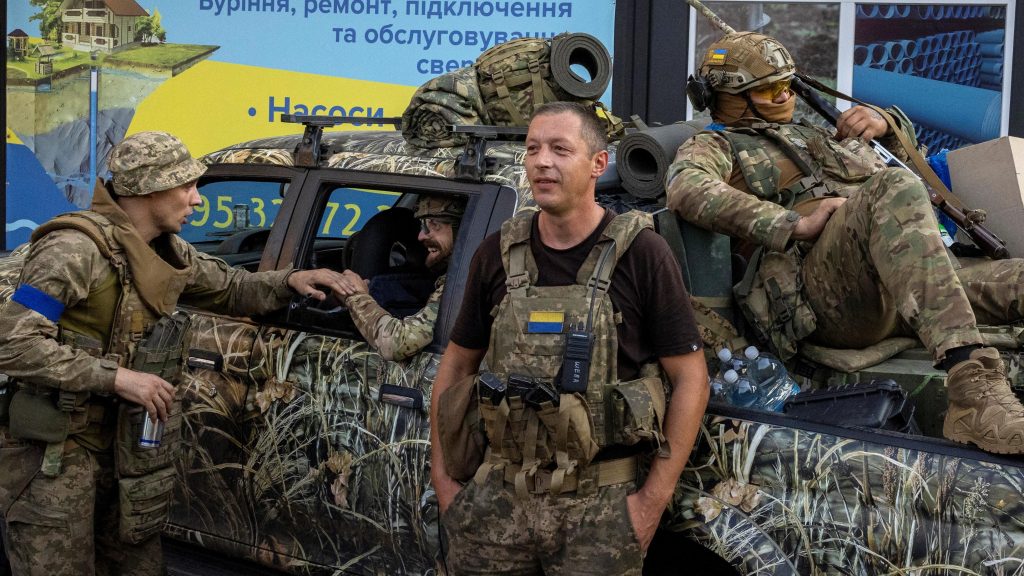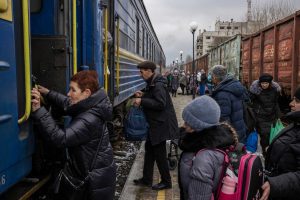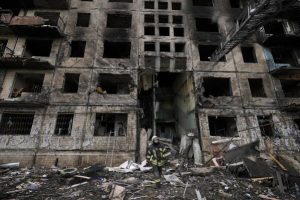Russia Intensifies Assault on Crucial Ukrainian City as Kyiv’s Kursk Offensive Stalls
3 min read

In recent days, Russia has made significant strides that overshadow Ukraine’s progress in its cross-border incursion into the Kursk region. Russian forces are now just kilometers from Pokrovsk, a vital Ukrainian logistics hub crucial for military operations in the eastern front.
Pokrovsk, equipped with a major railway station and essential roadways, serves as a key supply and reinforcement point for Ukrainian troops. Its strategic importance has raised alarms in Kyiv, with critics arguing that the military’s focus on Kursk has left Pokrovsk and other critical towns vulnerable.
Since Russia’s full-scale invasion began in February 2022, the conflict has intensified. During a recent visit to the front lines, Ukrainian Chief of Armed Forces Gen. Oleksandr Syrskyi reported that Russia is deploying “everything that can move” in its assault. Ukrainian President Volodymyr Zelensky acknowledged the dire situation, stating, “If we lose Pokrovsk, the entire front line will crumble,” according to military expert Mykhaylo Zhyrokhov.

The Strategic Importance of Pokrovsk
Pokrovsk, situated near Myrnohrad, was home to over 100,000 people before the war, though most have since fled. Together, these towns represent the last major Ukrainian-controlled cities in that part of Donetsk. The battle for Pokrovsk is seen as a continuation of the struggle for Avdiivka, which fell to Russian forces in February after prolonged and bloody combat. Avdiivka’s fall allowed Russia to refocus its efforts on Pokrovsk and the key hilltop town of Chasiv Yar, which commands views over several important Ukrainian-held cities in Donetsk. Recent clashes in Chasiv Yar resulted in five deaths.
With the Ukrainian military engaged in a large-scale evacuation of civilians from Pokrovsk, Gen. Syrskyi is working to bolster defenses and supply lines for troops stationed in the most challenging areas of the front.
Russian Tactical Gains and Ukrainian Responses
Russia’s pursuit of Pokrovsk has been relentless. Experts estimate that Moscow has committed around a third of its Central Army Group, or approximately 30,000 troops, to this offensive, including its most elite reserves. This week, Russian forces captured the Ukrainian town of Novohrodivka, provoking criticism from some Ukrainians who believed the town should have been better defended. Ukrainian MP Mariana Bezuhla highlighted that the trenches in Novohrodivka were largely abandoned, indicating a strategic withdrawal to fortify defenses at Pokrovsk.
The Ukrainian military’s decision to withdraw from Novohrodivka was likely aimed at minimizing potential losses and strengthening positions elsewhere, according to the Institute for the Study of War (ISW). Meanwhile, Russian forces have also intensified their attacks on neighboring areas like Selidove, employing new tactics reminiscent of those used earlier by the Wagner mercenary group. These tactics, which involve sending wave after wave of infantry, have been described as “meat assaults,” designed to overwhelm and exhaust Ukrainian defenders.
Russia’s use of glide bombs has further complicated Ukrainian defense efforts by forcing the dispersion of troops and sometimes necessitating withdrawals from the front lines.

The State of the Kursk Offensive
On the other hand, Ukraine’s significant cross-border offensive into the Kursk region has faced considerable slowdowns in the past week. The settlement of Sudzha, which Ukraine captured, has a population of around 5,000—much smaller than Novohrodivka, the town recently seized by Russia. Ukraine’s commander-in-chief reported that Ukrainian forces have taken control of 1,294 square kilometers (500 square miles) of territory within Kursk and captured 594 Russian soldiers. However, these figures must be viewed with caution.
One of the goals of Ukraine’s Kursk offensive was to divert Russian forces from other fronts, particularly Pokrovsk and Kurakhove. Yet, this strategy appears to have fallen short, as Russian forces at Pokrovsk have been reinforced rather than weakened, with their advance accelerating.
As the situation evolves, the impact of Ukraine’s Kursk offensive on the broader conflict remains uncertain, with ongoing battles at Pokrovsk potentially shaping the future course of the war.